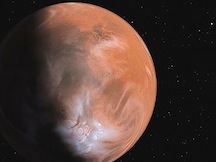
General research topics in the Monterey Formation (Monterey Shale)
o Interaction of pore pressure, dehydration, silica mobility, and pore abundance and morphology at silica phase boundaries.
o Influence of mechanical stratigraphy on fracture development in the Monterey Formation.
o Influence of depositional setting and process on lithofacies variations, including sediment composition and fabric and properties.
o Variation in the composition and character of diatomaceous sediments resulting from paleoceanographic setting and primary plankton assemblages.
o Relationships of facies and microfacies variations to diagenesis, deformation and reservoirs.
o Integrating subsurface data (core, image logs, petrophysical properties and seismic data) to develop conceptual models of Monterey Formation fractured reservoirs.
o Improved chronostratigraphy of the Monterey employing an integrated approach, including orbital cyclicity derived from well logs.
o Primary vs. structural and diagenetic control of lithology and rock properties.
o Roles of tectonics and paleoceanography in controlling Monterey facies, especially phosphatic, siliceous, dolomitic, and organic-rich deposits.
o Paleoceanographic and paleoclimate records from the Miocene-Pliocene Monterey Formation and related deposits.
o Identifying potential “fracture sweet spots” in Monterey Formation reservoirs based on structural position on folds and proximity to faults.
o Developing conceptual models of reservoir fracture systems through the integration of outcrop studies, core analysis, image logs and seismic surveys.
o Diagenesis, deformation and reservoir significance of early and stratigraphically out-of-sequence chert formation.


